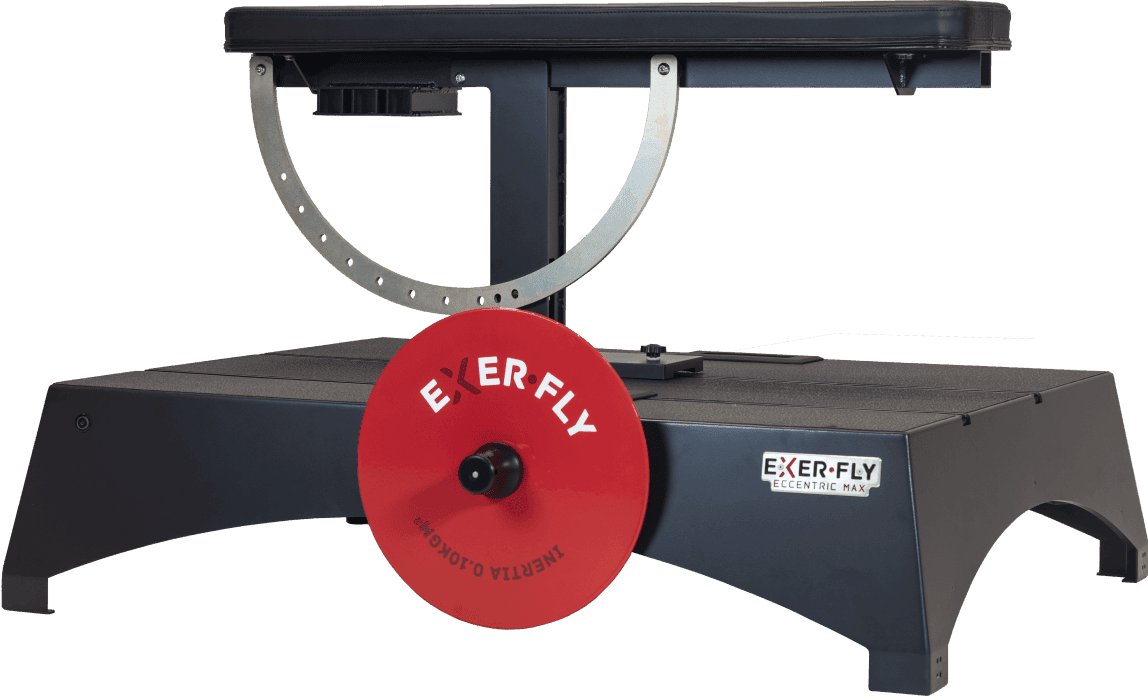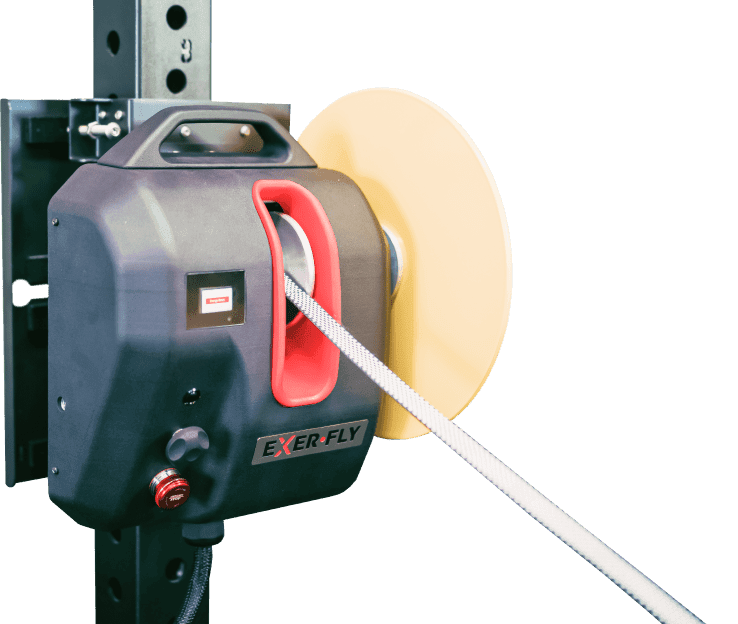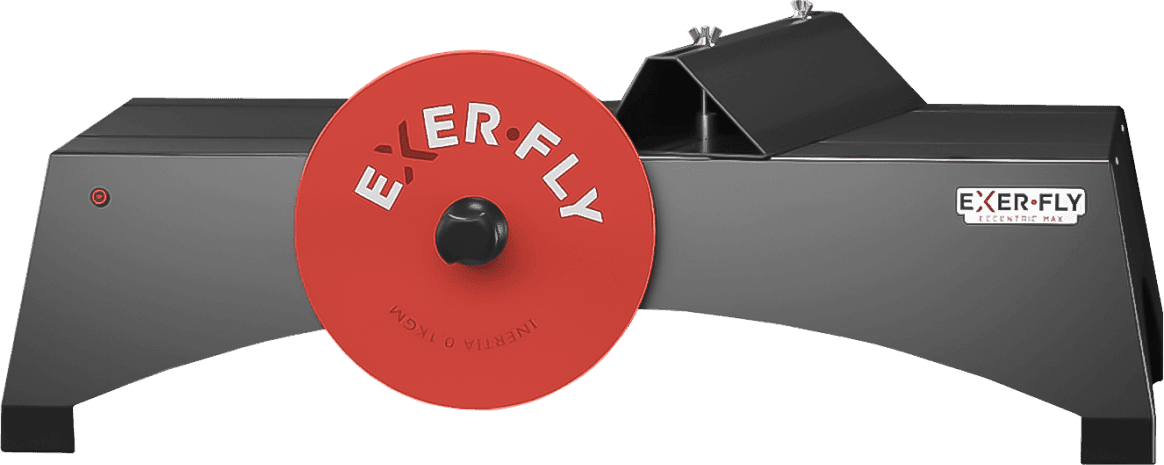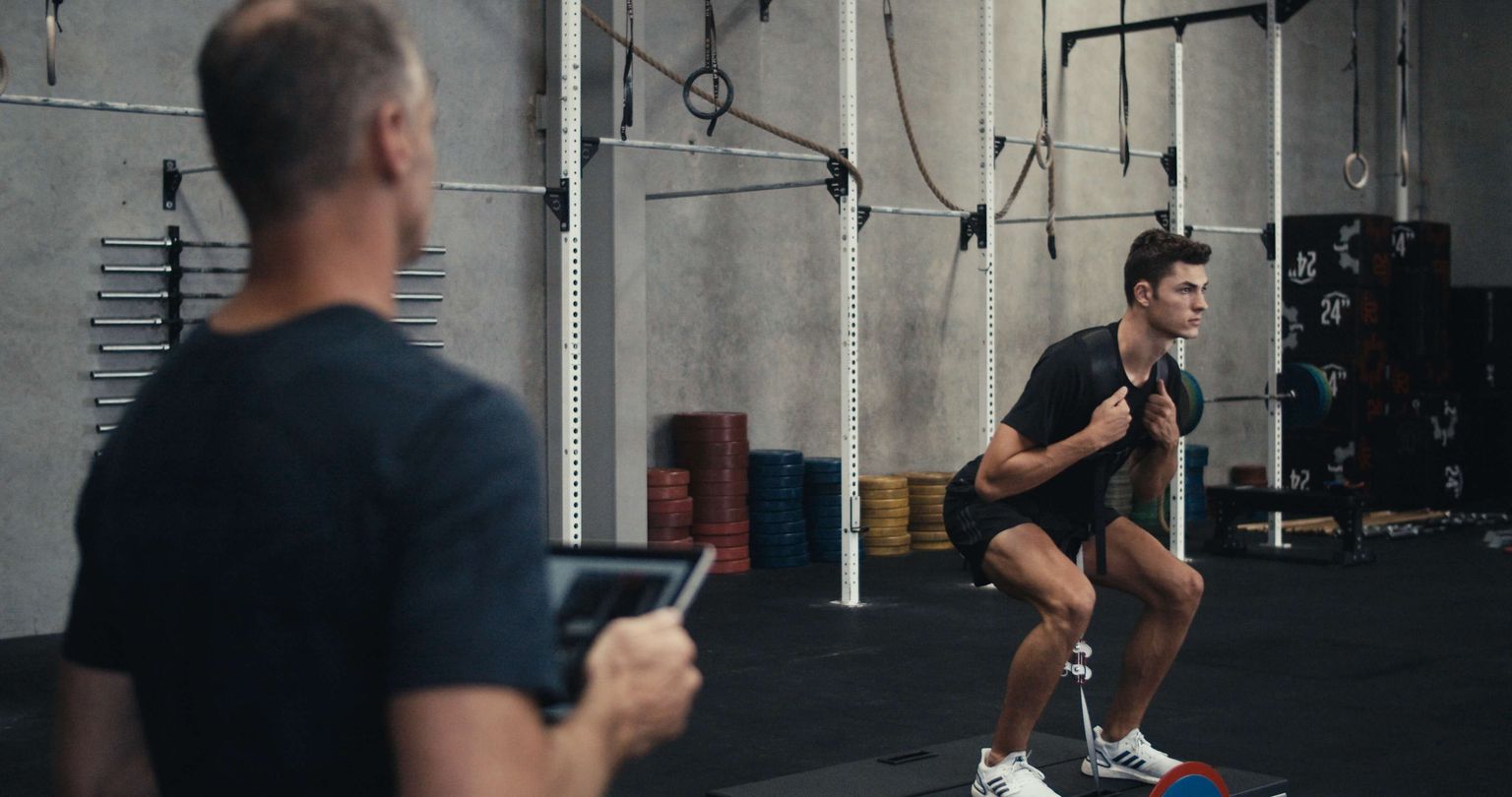
Using Flywheel Training For Long Term Knee Health
Maintaining joint integrity is crucial if you are a young performer or simply looking to live an active lifestyle. It is known that individuals who suffer an injury to a joint like the knee (ACL rupture, for example) will likely develop early-onset osteoarthritis, which can impact their quality of life.
Personally, in 2013, I suffered from a first cartilage lesion to the medial femoral condyle of my right knee. Then, in September 2016, I suffered the exact same injury, this time to my left knee. Both times, I underwent surgery that required the orthopedic surgeon to perform a procedure called microfracture, the most common form of bone marrow stimulation (Gillogly & Burnett, 2016).
This surgical procedure involved puncturing holes in the femoral condyle to stimulate the formation of fibrocartilage repair tissue, after which the cartilage defect was put back in place with a special nail and screws to ensure the region would heal.
The rehabilitation process following this surgical intervention is quite long. I was non-weight bearing for the first six weeks following surgery and used electrostimulation to regain some muscle mass in the quadriceps, thanks to atherogenic muscle inhibition.
Gradually, I was able to undertake physiotherapy and, after around six months, get back to somewhat of a regular training regimen, but I cannot say that I have fully regained full knee function.
As star rehabilitation specialist Bill Knowles would say, I am now a joint-compromised athlete. There will be days when I will experience some pain or discomfort in one or both knees, especially when I haven’t trained for a few days.
In addition, I must manage training volume (especially running volumes), choose more forgiving running surfaces like grass or in the woods, and adapt my exercise selection to make sure I stimulate my quadricep muscles frequently.
From a resistance training standpoint, the performance of exercises like the back squat or front squat has become more problematic. On most occasions, after squatting, I will experience soreness in the knees that will last 1-2 days, and this soreness makes walking or other movements uncomfortable.
Alternative exercises such as the Hex bar deadlift, lunges, and step-ups with bodyweight or a very light load for higher reps are not as taxing on the knee joint and allow me to train more regularly. The addition of cycling also helps alleviate any discomfort.
Flywheel Training For Knee Health
As a kinesiologist and athletic development coach, I had experimented with flywheel resistance training on one occasion many years ago and, more recently, had researched its benefits in terms of muscle hypertrophy, strength, and power development and from a performance perspective in terms of sprinting, jumping and change of direction (Beato, Maroto-Izquierdo, Hernández-Davó, & Raya-González, 2021; Hody, Croisier, Bury, Rogister, & Leprince, 2019; Suchomel et al., 2019).
Specific to my situation, flywheel resistance training became an exciting option to stimulate muscle hypertrophy in my quadriceps. From a mechanical perspective, the eccentric overload provided by the flywheel device is accompanied by a higher force output and a lower energy expenditure, which is useful when regulating training daily.
For the squat exercise specifically, using the flywheel device requires more significant contribution of the hip and ankle and less contribution of the knee compared to free weight (Chiu & Salem, 2006), which allows me to use flywheel training more frequently at a minimum of twice per week as recommended in the literature (Beato et al., 2021).
Flywheel Training Program For Knee Health
Typically, during the first resistance training session in a week, I will perform the squat exercise from a strength perspective for 3 sets of 6-8 reps with an inertial load of 0.10-0.15 kg•m2 and manipulate foot width, squat depth, and movement velocity depending on how I feel. Later in the week, I would currently perform a split squat with a lighter inertial load (0.10kg•m2) also for 6-8 reps per leg.
I have previously experimented with the Rear-Foot Elevated Split Squat (RFESS and was quite surprised by how easy it was to set up prior to doing the exercise and how little delayed-onset muscle soreness I had, contrary to what can be expected when performing eccentric training (Hody et al., 2019).
Below is an example of my current weekly training and how flywheel training complements traditional resistance training and high-intensity interval training to prepare for more running like tempo runs on grass and some fartlek as summer arrives.
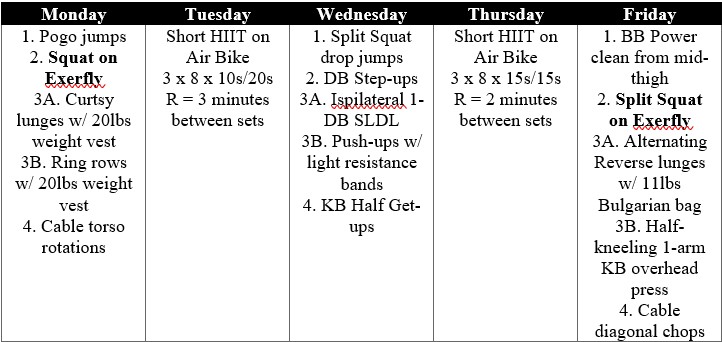
Final Thoughts
In closing, the regular addition of flywheel resistance training for the past 6 months allowed me to maintain a training frequency of 5 sessions per week without experiencing the discomfort and soreness in my knees I’ve had when doing traditional resistance training with barbell back squats and front squats.
I look forward to seeing how this addition will influence my running workouts in the upcoming weeks and how I can further experiment with flywheel resistance training in terms of movement and loading.
Bio Xavier is an athletic development/S&C coach from Sherbrooke, Canada. He holds a Ph.D. in education from Université du Québec à Montréal and teaches in the Sports Studies Department at Bishop’s University. He currently works with the ice hockey teams at Stanstead College and with the Men’s volleyball team at Université de Sherbrooke.
References
- Beato, M., Maroto-Izquierdo, S., Hernández-Davó, J. L., & Raya-González, J. (2021). Flywheel Training Periodization in Team Sports. Frontiers in Physiology, 12(November), 1–6.
- Chiu, L. Z., & Salem, G. J. (2006). Comparison of joint kinetics during free weight and flywheel resistance exercise. Journal of Strength and Conditioning Research, 20, 555–562.
- Gillogly, S. D., & Burnett, A. (2016). Return to play after articular cartilage repair of the knee. Aspetar Sports Medicine Journal, 298–305.
- Hody, S., Croisier, J. L., Bury, T., Rogister, B., & Leprince, P. (2019). Eccentric muscle contractions: Risks and benefits. Frontiers in Physiology, 10(MAY), 1–18.
- Suchomel, T. J., Wagle, J. P., Douglas, J., Taber, C. B., Harden, M., Haff, G. G., & Stone, M. H. (2019). Implementing Eccentric Resistance Training—Part 2: Practical Recommendations. Journal of Functional Morphology and Kinesiology, 4(3), 55.

